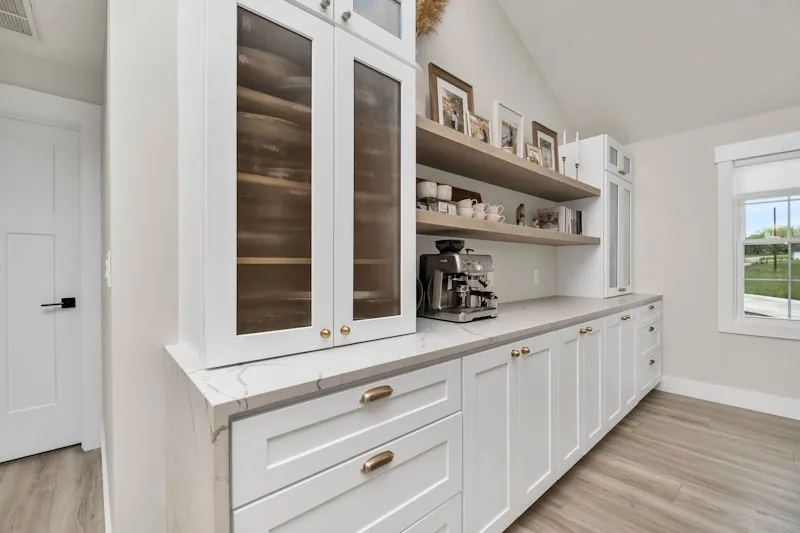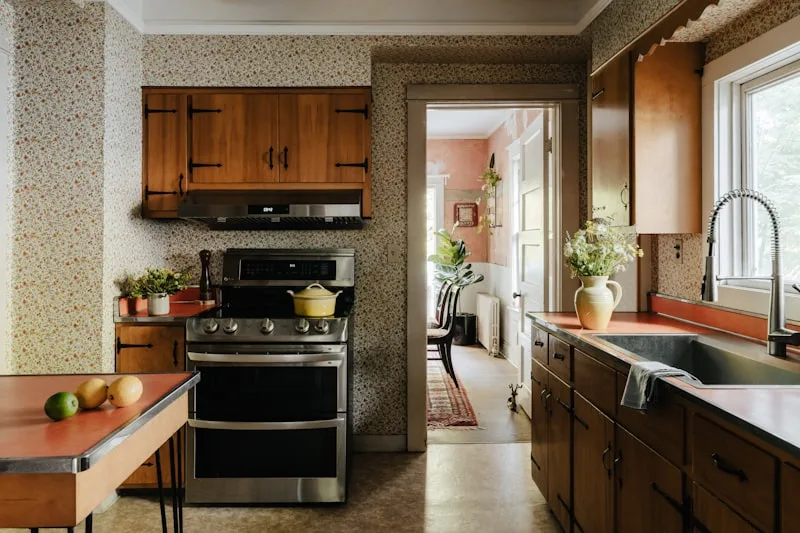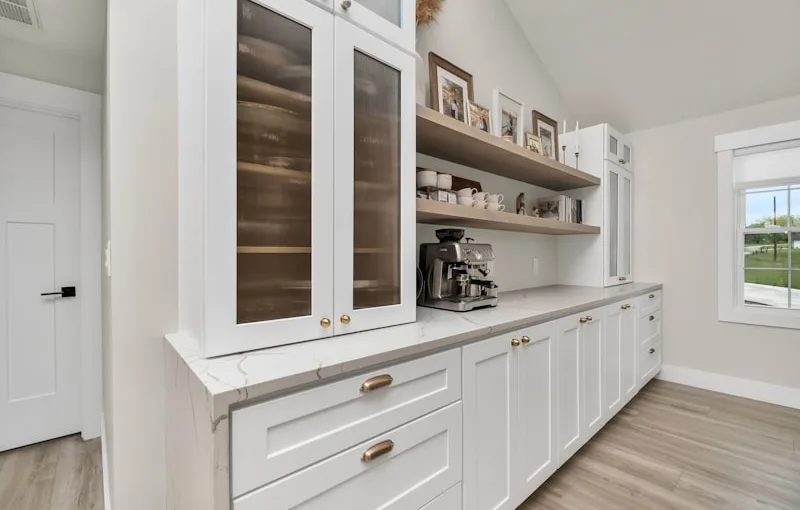First off, let’s talk about the materials. Most cabinets are made from particleboard or MDF, which are often treated with adhesives and finishes that can emit volatile organic compounds (VOCs). Think of it like a new car smell—only less pleasant! These compounds can linger for weeks, making your kitchen feel less like a culinary haven and more like a science experiment gone wrong.
Now, how do you tackle this olfactory offense? Start by airing out your kitchen. Open those windows and let some fresh air in. It’s like giving your cabinets a breath of fresh air! You can also wipe down the surfaces with a mixture of vinegar and water. Vinegar is a natural deodorizer, and it’ll help neutralize those funky smells without leaving behind a chemical residue.
If the odor persists, consider placing bowls of baking soda or activated charcoal inside the cabinets. These little heroes absorb odors like a sponge, leaving your space smelling fresh. It’s like having a mini air purifier right in your kitchen!
Lastly, if you’re still struggling with the smell, it might be worth checking if the cabinets were treated with any strong finishes. Sometimes, a simple re-sealing can do wonders. So, don’t let those new cabinets ruin your kitchen vibe—take action and reclaim that fresh, inviting atmosphere!
Unpacking the Mystery: Why Your New Kitchen Cabinets Smell and How to Banish the Odor
First off, it’s essential to understand that new cabinets often come with a variety of materials, finishes, and adhesives. These components can release volatile organic compounds (VOCs) that create those unpleasant smells. Think of it like a new car scent—only less pleasant! The off-gassing process can take time, and while it’s usually harmless, it can be annoying.
Now, how do you tackle this issue? One effective method is to air out your kitchen. Open those windows and let the fresh air flow in! You might also want to run a fan to help circulate the air. It’s like giving your cabinets a breath of fresh air, helping to dissipate those lingering odors.
Another trick is to use natural odor absorbers. Place bowls of baking soda or activated charcoal inside the cabinets. These little heroes work like sponges, soaking up unwanted smells. It’s a simple, eco-friendly solution that can make a world of difference.
If the smell persists, consider wiping down the surfaces with a mixture of vinegar and water. Vinegar is a natural deodorizer and can help neutralize those stubborn odors. Just think of it as a refreshing shower for your cabinets!
So, while the mystery of smelly kitchen cabinets can be frustrating, it’s usually a temporary issue. With a little patience and some clever tricks, you can banish those odors and enjoy your beautiful new space. Who knew that tackling a kitchen conundrum could be so straightforward?
From Fresh to Funky: Understanding the Causes of Odors in New Kitchen Cabinets
First off, let’s talk about the materials. Many cabinets are made from particleboard or MDF, which are often glued together with adhesives that can emit volatile organic compounds (VOCs). Think of it like a new car smell—great at first, but it can linger longer than you’d like. If your cabinets are freshly painted or stained, those chemicals can also contribute to the scent. It’s like they’re trying to show off their new look, but the smell is a little too much.
Then there’s the environment. If your kitchen is humid or poorly ventilated, odors can get trapped, making that new cabinet smell feel more like a funky locker room. It’s like trying to air out a wet sponge—good luck with that!
And let’s not forget about the potential for mold or mildew, especially if the cabinets were stored in a damp place before installation. Imagine opening your cabinets to find a surprise party of smells you didn’t sign up for.
Lastly, if you’ve got any food items or cleaning supplies stashed away, they can also contribute to the overall aroma. It’s like mixing a delightful fruit salad with a hint of gym socks—definitely not the vibe you want in your kitchen!
So, while new kitchen cabinets can bring a fresh look to your space, understanding the causes of those unexpected odors can help you tackle them head-on.
New Cabinets, Unwanted Scents: Top Tips for Eliminating Kitchen Odors
First off, let’s talk about the power of baking soda. This little miracle worker isn’t just for baking; it’s a fantastic odor absorber. Place an open box in your cabinets, and let it work its magic. It’s like having a tiny air purifier that doesn’t need batteries!
Next, consider the wonders of vinegar. This kitchen staple is not just for salad dressings; it’s a natural deodorizer. Mix equal parts of water and vinegar in a spray bottle, and give your cabinets a light mist. The vinegar smell will dissipate, taking those unwanted odors with it. It’s like a breath of fresh air for your cabinetry!
Don’t forget about essential oils! A few drops of lemon or lavender oil on a cotton ball can transform your cabinets into a fragrant haven. Just tuck them away in a corner, and let the scent slowly release. It’s like having a mini spa retreat right in your kitchen.
Lastly, keep your kitchen well-ventilated. Open windows or turn on a fan while cooking to let fresh air circulate. Think of it as giving your kitchen a refreshing breeze, sweeping away any lingering smells.
The Smell of New: What’s Causing Your Kitchen Cabinets to Stink and How to Fix It
First off, let’s talk about the materials. Many cabinets are made from particleboard or MDF, which are often treated with adhesives and chemicals. These substances can release volatile organic compounds (VOCs) that create that musty smell. Think of it like a new pair of shoes that has that “new shoe smell” but in a not-so-pleasant way.
Another culprit could be moisture. If your cabinets are in a humid environment, they can absorb moisture, leading to mold or mildew growth. Imagine your cabinets as sponges soaking up all that dampness, and before you know it, they start to smell like a damp basement.
So, how do you tackle this olfactory offense? Start by airing out your cabinets. Open those doors wide and let some fresh air in! You can also wipe down the insides with a mixture of vinegar and water. Vinegar is like nature’s deodorizer, cutting through those stubborn smells.
If the odor persists, consider placing an open box of baking soda inside. It’s like a little odor-fighting superhero, absorbing unwanted scents. For a more permanent solution, you might want to look into cabinet liners that can help seal off those pesky smells.


With a little effort, you can transform your kitchen from a stinky space into a fresh and inviting area where you’ll love to whip up your favorite meals!
Odor Alert: How to Identify and Remove Unpleasant Smells from Your New Kitchen Cabinets
First off, let’s talk about the culprits. New cabinets can sometimes emit a chemical smell due to the materials used in their construction. Think of it like a new car smell, but not as pleasant. If you notice a strong odor, it could be from the adhesives, finishes, or even the wood itself. It’s essential to pinpoint the source. Open the doors and take a whiff—does it smell musty, like a damp basement? Or is it more of a chemical tang? Knowing what you’re dealing with is half the battle.
Now, onto the removal process. Start by airing out your cabinets. Leave the doors open for a few hours, or even days if you can. Fresh air works wonders! If the smell persists, try wiping down the surfaces with a mixture of vinegar and water. Vinegar is like nature’s deodorizer; it neutralizes odors instead of just masking them. For stubborn smells, place an open box of baking soda inside the cabinets. It’s like a sponge for odors, soaking them up over time.
If you’re still battling those unwelcome scents, consider using activated charcoal bags. They’re like little ninjas for odors, quietly working behind the scenes to absorb any lingering smells. With a little patience and these simple tricks, you can transform your new kitchen cabinets from a source of irritation to a breath of fresh air!
Frequently Asked Questions
What Are Effective Ways to Remove Odors from Kitchen Cabinets?
To eliminate odors from kitchen cabinets, start by emptying them and cleaning surfaces with a mixture of vinegar and water. Place an open box of baking soda or activated charcoal inside to absorb lingering smells. Additionally, using coffee grounds or citrus peels can provide a fresh scent. Ensure proper ventilation and consider using essential oil diffusers for a pleasant aroma.
Can I Prevent Odors in My New Kitchen Cabinets?
To prevent odors in new kitchen cabinets, ensure proper ventilation during installation, use odor-absorbing materials like baking soda or activated charcoal, and regularly clean surfaces. Avoid storing strong-smelling items and consider sealing the cabinets with a non-toxic finish to minimize odor absorption.
How Long Will the Odor from New Cabinets Last?
The odor from new cabinets typically lasts from a few days to several weeks, depending on the materials used and the ventilation in the area. To expedite the process, ensure proper airflow and consider using odor absorbers.
Are the Smells from New Cabinets Harmful to My Health?
New cabinets can emit volatile organic compounds (VOCs) and other odors due to the materials and finishes used. While these smells can be unpleasant, they are typically not harmful in low concentrations. However, prolonged exposure in poorly ventilated areas may lead to respiratory irritation or other health issues. It’s advisable to ensure proper ventilation and allow new cabinets to off-gas before extensive use.
What Causes the Smell in New Kitchen Cabinets?
New kitchen cabinets often emit a smell due to the materials used in their construction, such as particleboard, MDF, or plywood, which can release volatile organic compounds (VOCs). These compounds are released during the manufacturing process and can take time to dissipate. Additionally, adhesives, finishes, and paints used in the cabinets may contribute to the odor. Proper ventilation and allowing time for the smell to fade can help mitigate this issue.
